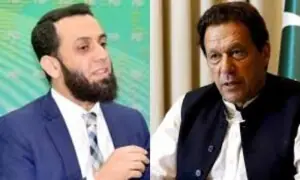What’s going to happen to petrol, power and your pocket next, Pakistanis
The economic crisis in Pakistan is spiraling out of control. For the last few weeks, the Sharif government has been floundering around as it has tried to get a grip on it. But now, the economy is at breaking point. And it is without any sense of irony that one says this is nothing new: It is like every other crisis we have suffered. We have a widening current account deficit, sliding foreign exchange reserves, and rapidly depreciating currency.
The crisis has been compounded by the Imran Khan government’s decision to cut and then freeze energy prices. This petroleum and electricity subsidy, which was supposed to be “fully funded,” was a ticking time bomb for the incoming Sharif government. Rather than reverse this disastrous policy on day one, however, the new government faltered. As the price of oil rose in international markets, the fiscal impact of the subsidy swelled.
At this point, the government is providing a subsidy of Rs31 per liter on petrol and Rs73 per liter on diesel. In addition to this, a Rs5 per unit subsidy is being provided on electricity. The cost of this subsidy for the next two weeks comes to over Rs75 billion, which is almost 40% of the total annual budget for cash transfers made to citizens under the Benazir Income Support Programme.
Once this subsidy is removed—and it will be removed—the price of petrol is expected to cross the Rs200 per liter mark. (It may end up being closer to Rs250 if all taxes are restored, as the IMF has demanded). What will follow is a wave of inflation, which is already hovering around 13% despite the freeze in energy prices.
At the same time, the rupee remains under pressure, with reports suggesting that the dollar is difficult to purchase at even Rs200. The corrosion of the rupee’s value will manifest in even more inflation and the government will have no choice but to embark on an extremely painful period of austerity and macroeconomic stabilization.
For ordinary Pakistanis, times are about to get tougher. There is no pain-free way to deal with such economic crises, especially when the government keeps vacillating because it is unwilling to pay the political price that comes with making unpopular and agonizing choices. Pakistan’s economy is on the brink and its citizens, ground down by over 40% inflation over the last three and a half years, are likely to experience a lot more pain in the coming weeks and months.
The writer is director of the Pakistan Initiative for @ACSouthAsia and host of the popular podcast @pakistonomy
For the latest news, follow us on Twitter @Aaj_Urdu. We are also on Facebook, Instagram and YouTube.




















Comments are closed on this story.